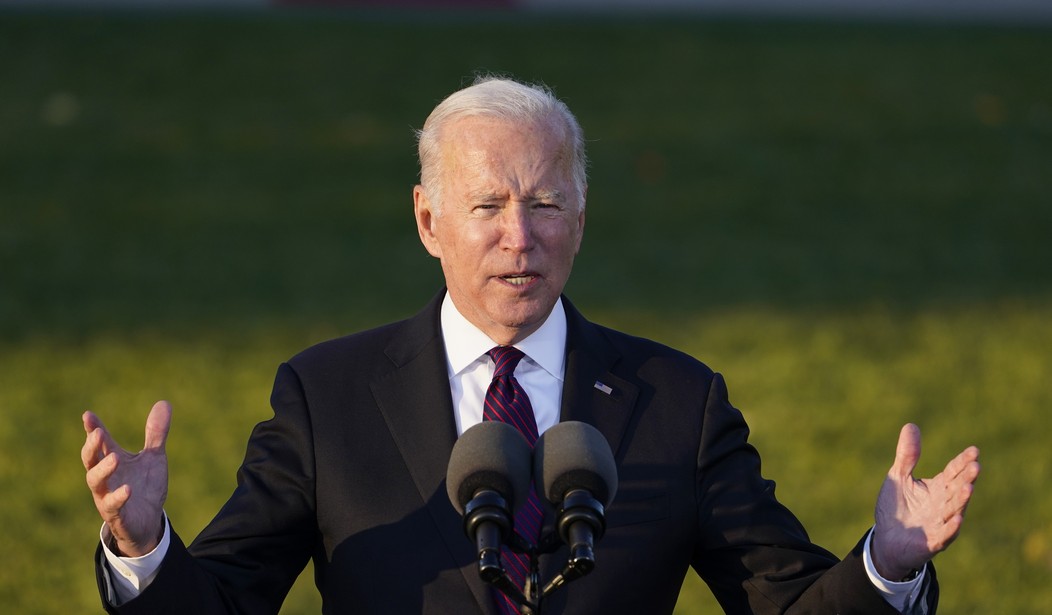After months of telling American consumers that the inflation before their eyes was transitory or just a high class problem, the Biden administration has finally conceded that prices are indeed on the rise. Unfortunately, the renewable energy provisions within the president’s ‘Build Back Better’ reconciliation bill risk pushing costs even higher. Without overhauling the regulations that restrict the domestic production of critical minerals, the president’s bill will heap even greater demand on already slim resources.
From the supermarket checkout to the newspaper headlines, it’s hard to miss that inflation is at a 31-year high. A significant driver of that rise has been energy prices. For example, in Houston, the October price of motor fuel was up by 60%, year-over-year. In the Bay Area, consumer electricity prices are up 16% from last year. Across the country, the Bureau of Labor Statistics’ data suggests that urban energy prices haven’t been this high since 2008.
As the country approaches a cold and expensive holiday period, the surge in prices has left the president’s ‘Build Back Better’ blowout bill in an unflattering light. While the administration’s allies eagerly try to make Federal Reserve Chairman Jerome Powell the sacrificial inflationary lamb, even progressives are sounding the alarm on the inflationary pressures that a spending spree bill would unleash.
But the inflation debate has so far failed to consider how federally-induced demand for renewable energy and electric vehicles might affect consumer prices. From the gallium needed to make solar cells to the lithium in car batteries, a clean energy system requires an array of resources and critical minerals. These inputs are not tangential or ancillary costs that are hidden far up the supply chain. Rather, increasingly global demand for critical minerals is shifting the cost of green technology in what is often termed “greenflation.”
Recommended
The ongoing experience of the world’s largest electric (EV) vehicle market, the People’s Republic of China, provides a cautionary tale. Having taken an early lead in the development and manufacture of EVs, it was expected by many that economies of scale would eventually reduce local consumer costs. But rising demand for nickel, cobalt, and lithium has pushed commodity prices higher and higher, with battery costs following the same path.
Unfortunately, the Build Back Better bill is currently scripted to aggressively acquire a colossal number of products made from these minerals. Among other initiatives, $5 billion is allocated to the General Services Administration to buy electric vehicles for the fiscal year 2022 alone (section 80001), another $3 billion goes to the US Postal Service for its own electric fleet (section 80003), and a sweet $10 million are earmarked for the District of Columbia to electrify its fleet (section 80008).
Buoyed by the president’s vow to make the economy carbon net-neutral by 2050, there can be little doubt that the allocated funds will be spent expeditiously. But the effect of a sudden rise in demand for electric vehicles and parts would not be limited to the car market. Batteries, and their critical mineral inputs, allow solar and wind power to be saved for when the sun doesn’t shine, or the wind doesn’t blow. The resources needed to produce consumer and utility scale batteries won’t be exempt from the Build Back Better demand blowout.
Ensuring that supply for critical and rare minerals will be key to keeping clean energy costs down. But, much like the global oil industry, the deposits and refining facilities of these critical minerals are geographically concentrated in select countries and regions. Due to this disparity, according to the Congressional Research Service, the United States is 100% reliant upon the import of 14 out of 35 critical minerals.
The short supply of these inputs is not completely lost on the White House or Congress. In June, a White House report acknowledged the lack of domestic production and refining. More recently, the Infrastructure Investment and Jobs Act allocates $320 million to mapping the location of critical minerals in the United States (section 40201), as well as $400 million towards research on mining, recycling, and reclaiming critical minerals (section 40210).
However, all this investment in knowledge and efficiency will be wasted without addressing the regulations that prevent the extraction of critical minerals. Lengthy permitting processes and reviews have long bedevilled even the most strident ambitions. Federal permitting for critical mineral mining projects, just like major renewable energy installations, are subject to lengthy litigation through the National Environmental Policy Act (NEPA). In 2020, the Trump administration sought to streamline the onerous regulations in NEPA. Like clockwork, the Biden administration vowed to undo the reforms. Without forging a practical way forward, NEPA could stonewall the domestic supply of critical minerals.
Over the past year, the surging cost of energy has punished household budgets across the country. By driving up demand for critical minerals without facilitating their domestic extraction and procurement, the Build Back Better bill risks supercharging greenflation. Before sleepwalking into a foreseeable problem, the president needs to pre-emptively clear the regulatory roadblocks and capricious litigation that will hurt consumer budgets and hinder the clean energy transition.



















Join the conversation as a VIP Member